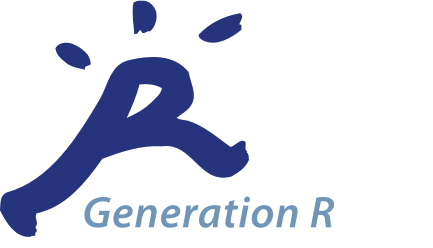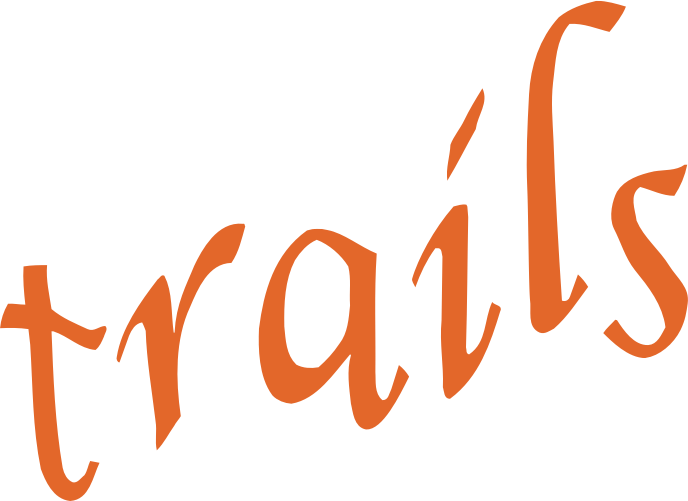-
measure Language Development Survey (LDS)
Study: Generation R Mode of collection: SelfAdministeredQuestionnaire Available measurements: Main Cohort 2.5 yearsThe Language Development Survey (LDS) assesses receptive and expressive language development. This is a 310-word vocabulary checklist, e.g., ‘Apple’ and ‘Tortoise’, with words arranged within 14 semantic categories. Parents were asked to identify the words that the child uses spontaneously.Created May 3, 2023 • Updated May 3, 2023 -
measure Macarthur Communicative Development Inventory (MCDI)
Study: Generation R Mode of collection: SelfAdministeredQuestionnaire Available measurements: Main Cohort 1.5 yearsThe MacArthur Communicative Development Inventories (CDIs) are a pair of widely used parent-report instruments for assessing communicative skills in infants and toddlers. The CDIs are parent report instruments which capture important information about children's developing abilities in early language, including vocabulary comprehension, production,...Created May 3, 2023 • Updated May 3, 2023 -
measure Conners' Parent Rating Scale - Revised Short Form (CPRS-R)
Study: Generation R Mode of collection: SelfAdministeredQuestionnaire Available measurements: Main Cohort 8 yearsThe Conners’ Parent Rating Scale–Revised Short Form was used to assess attention problems in children. This questionnaire contains 27-items and includes attention problems and symptoms of the oppositional defiant disorder.Created May 3, 2023 • Updated May 3, 2023 -
measure Short Obsessive Compulsive Disorder Screener (SOCS)
Study: Generation R Mode of collection: SelfAdministeredQuestionnaire Available measurements: Main Cohort 8 years 9-10 years 13-14 years Covid questionnaires 17-18 yearsObsessive compulsive symptoms were assessed using the Short OCD Screener (SOCS) at multiple times via the main caregiver- and child-report. The SOCS is a 7-item scale questionnaire measuring compulsive behaviors including checking, repetition, and ability to stop behaviors, assessed on a 3-point Likert scale.Created May 3, 2023 • Updated May 3, 2023 -
measure Five-Minute Speech Sample
Study: Generation R Mode of collection: Interview Available measurements: Main Cohort Late pregnancyThe Coding of Expressed Emotion from the Five Minute Speech Sample is a method to assess the emotional climate in families. The Five Minute Speech Sample is a task in which a family member speaks about topic of their choice for five minutes while being recorded. The sample is then transcribed and coded for emotional expression using the EE coding system....Created May 3, 2023 • Updated May 3, 2023 -
measure Peabody Picture Vocabulary Task (PPVT)
Study: YOUth Mode of collection: MeasurementsAndTests Behavioral/cognitive task Available measurements: Baby and Child 3 years 6 years
Child and Adolescent 9 years 12 yearsThe Peabody-Picture vocabulary task (PPVT (Dunn and Dunn, 1981); for Dutch, the PPVT-III-NL (Dunn and Dunn, 2005)) is a widely used computer task to evaluate a participant’s vocabulary size for his or her age, and serves as a proxy of general language performance. It is normed for participants up to 90 years of age. Participants see on each trial an array...Created March 28, 2023 • Updated March 30, 2023 -
measure EEG Face Emotion
Study: YOUth Mode of collection: MeasurementsAndTests EEG Available measurements: Baby and Child 10 months 3 years 6 yearsTo understand how the developing brain differentially responds to viewing faces with different facial expressions (happy and fear), young children (from 10 months onwards) passively watch pictures of happy or fearful faces while we measure their EEG. Note that the same faces but with neutral expressions have been presented in EEG Face House experiment....Created March 28, 2023 • Updated March 30, 2023 -
measure EEG Coherence
Study: YOUth Mode of collection: MeasurementsAndTests EEG Available measurements: Baby and Child 5 months 10 months 3 years 6 yearsThis task serves two purposes: first, to observe how the developing brain signal decomposes into separate frequency bands as a function of what the child sees; second: to understand how the connectivity among different areas of the developing brain develops. Infants passively watch 60-second video clips depicting singing women or moving toys while we...Created March 28, 2023 • Updated March 30, 2023 -
measure Looking While Listening
Study: YOUth Mode of collection: MeasurementsAndTests Eyetracking Available measurements: Baby and Child 3 yearsThis eye tracking task is a simplified version of a visual world paradigm, in which every trial presents pairs of familiar images/objects of roughly the same size (example: a chair and a bath), accompanied with a pre-recorded Dutch sentence that asks the participant to look at one of these images (e.g., where is a chair?). This paradigm - known as Looking...Created March 28, 2023 • Updated March 30, 2023 -
measure Gaze Cueing experiment
Study: YOUth Mode of collection: MeasurementsAndTests Eyetracking Available measurements: Baby and Child 5 months 10 months 3 years 6 years
Child and Adolescent 9 years 12 yearsThe social gaze task is an eye-tracking task that measures a subject's sensitivity to another person's gaze direction as a possible cue to predict the location of a next event. Sensitivity to gaze direction is taken as a marker of social competence. In a trial, children see a face with direct gaze, followed by an eye gaze shift to one side, followed by a...Created March 28, 2023 • Updated March 30, 2023 -
measure EEG Face House
Study: YOUth Mode of collection: MeasurementsAndTests EEG Available measurements: Baby and Child 5 months 10 months 3 years 6 yearsTo understand how the developing brain differentially responds to viewing pictures of faces vs. houses, infants or children up to the age of 6 passively watch pictures of (neutral) faces (12 faces repeated four times) and pictures of typical Dutch houses (also 12 x 4) while we measure their EEG. This task lasts 4 minutes.Created March 28, 2023 • Updated March 30, 2023 -
measure Functional MRI Emotion experiment behavior
Study: YOUth Mode of collection: MeasurementsAndTests Behavioral/cognitive task Available measurements: Child and Adolescent 9 years 12 yearsBehavioral output file accompanying the functional MRI acquired while subjects performed a task. Participants viewed pictures of faces (happy, fearful, or neutral expression) and houses in a pseudorandom order. The stimuli are taken from the Radboud Faces Database (Langner et al., 2010). Stimuli were presented in blocks of 18 seconds, with four blocks for...Created March 28, 2023 • Updated March 30, 2023 -
measure Infant Face Popout
Study: YOUth Mode of collection: MeasurementsAndTests Eyetracking Available measurements: Baby and Child 5 months 10 months 3 years 6 yearsShortened version of the face-pop out experiment (Gliga et al, 2009 Exp1; Elsabbagh et al., 2013): free viewing experiment in which children are presented with multiple five-item arrays (always: 1. Human face; 2. Car; 3. Mobile phone; 4. Bird; 5; Face-shaped noise figure). It tests whether children automatically orient to faces and whether they prefer to...Created March 28, 2023 • Updated March 30, 2023 -
measure Hand Game
Study: YOUth Mode of collection: Observation Available measurements: Baby and Child 3 yearsThe Hand game aims to measure non-verbal inhibitory control in children aged 3 to 5 years and is based on the adapted hand game by Hughes (1996). During this task, the child is asked to place a flattened hand on the table whenever the researcher presents a fist and to present a fist whenever the researcher places a flattened hand on the table. Each child...Created March 28, 2023 • Updated March 30, 2023 -
measure Macarthur Communicative Development Inventory (MCDI)
Study: YOUth Mode of collection: SelfAdministeredQuestionnaire Available measurements: Baby and Child 10 months 3 yearsThe MacArthur Communicative Development Inventories (CDIs) are a pair of widely used parent-report instruments for assessing communicative skills in infants and toddlers. The CDIs are parent report instruments which capture important information about children's developing abilities in early language, including vocabulary comprehension, production,...Created March 28, 2023 • Updated March 30, 2023 -
measure Functional MRI Emotion experiment scan
Study: YOUth Mode of collection: MeasurementsAndTests MRI Available measurements: Child and Adolescent 9 years 12 yearsFunctional MRI acquired while subjects performed a task. Participants viewed pictures of faces (happy, fearful, or neutral expression) and houses in a pseudorandom order. The stimuli are taken from the Radboud Faces Database (Langner et al., 2010). Stimuli were presented in blocks of 18 seconds, with four blocks for each of the four stimulus types. The...Created March 28, 2023 • Updated March 30, 2023 -
measure Childhood Executive Functioning Inventory (CHEXI)
Study: TRAILS Mode of collection: SelfAdministeredQuestionnaire Available measurements: The Next Generation T4 T5Validated assessment of executive functioning. Includes inhibition, regulation, working memory, and planning.Created March 28, 2023 • Updated March 28, 2023 -
measure Approach Avoidance Test (AAT)
Study: TRAILS Mode of collection: MeasurementsAndTests Behavioral/cognitive task Available measurements: Population cohort T4Validated assessment of implicit action tendencies towards emotional facial expressions. The participants have to push (approach) or pull (avoid) a joystick when presented with emotional facial expressions. Includes male and female faces and neutral, happy, angry, and disgusted facial expressions.Created March 28, 2023 • Updated March 28, 2023 -
measure Spatial Orienting Task (SOT)
Study: TRAILS Mode of collection: MeasurementsAndTests Behavioral/cognitive task Available measurements: Population cohort T3
Clinical cohort T3Validated assessment of attentional processes. The participants are instructed that they can either win or loose points after which they have to push a button if they see a target pop up. The target either pops up fast or really fast and the location where the target pops up can be primed or not. Includes performance, heart rate, heart rate variability,...Created March 28, 2023 • Updated March 28, 2023



